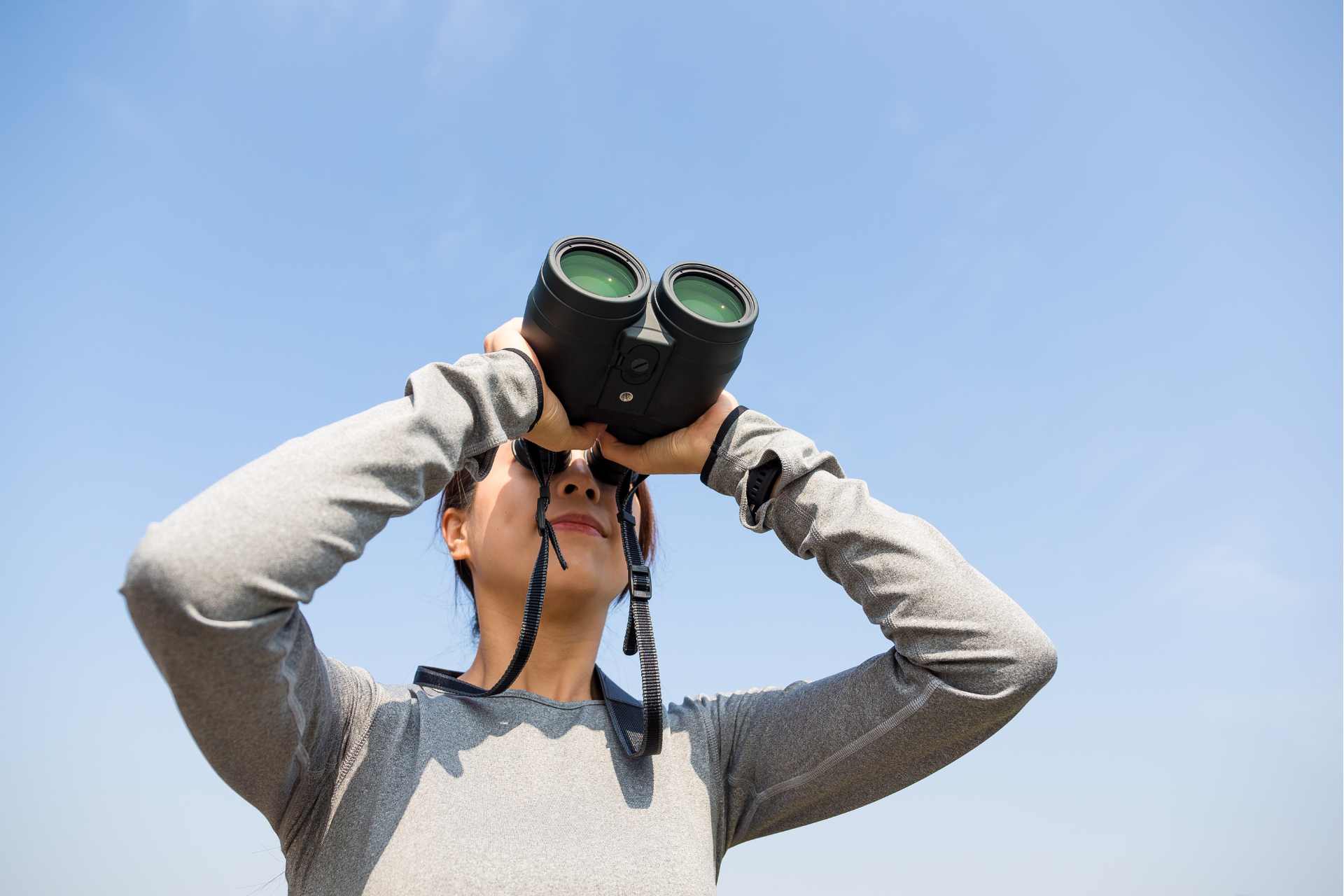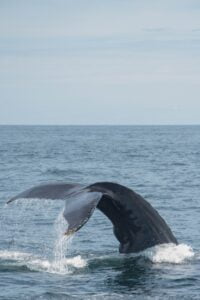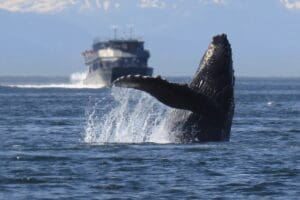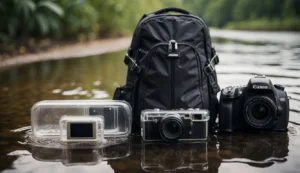Essential Gear for Whale Watching: What You Need for the Best Experience
Embarking on a whale-watching trip is an exhilarating experience that brings individuals close to the majesty of the ocean’s giants. However, this adventure’s success and enjoyment largely depend on being properly equipped. Since whale-watching tours can take tourists into a variety of marine environments, often characterized by unpredictable weather and sea conditions, the right gear is not just about comfort but also safety.
The core principle of dressing for a whale watching tour is layering. By wearing multiple layers, one can adjust to the changing temperatures and wind chill encountered out on the open water. A base layer that wicks away moisture, coupled with a warm insulating layer, is vital. Dress as if going for a skiing trip sans the snow. This layering method allows flexibility to add or remove clothing as conditions dictate.
Protection against the elements doesn’t end with clothing; outerwear accessories are also essential. For example, a waterproof jacket can be a crucial shield from sea spray and rain, while quality non-slip footwear ensures safety on deck. To capture memories or enhance the viewing experience, binoculars and a camera are recommended, with the latter kept safe in a waterproof bag. These items and appropriate clothing will help ensure that the whale-watching experience is comfortable, safe, and memorable.
Planning Your Trip
When planning a whale watching trip, it’s crucial to consider weather conditions which can greatly impact the experience. Tourists should book their whale watching tours in advance, especially when aiming to visit popular destinations like Baja California, renowned for sightings of humpbacks and gray whales.
Booking a tour well in advance is recommended to ensure availability, particularly during the peak seasons. For instance, the summer months often increase whale activity along the Whale Trail. Reliable tour operators can provide crucial insights into the best times for optimal sightings.
Here’s a checklist for planning your trip:
- Research: Look for reputable tour companies with positive reviews.
- Timing: Check the best season for watching whales in your chosen location.
- Weather Check: Always verify the weather forecast closer to your departure date.
Itinerary planning should involve checking the following:
| Destination | Best Months | Whale Species |
|---|---|---|
| Baja California | December to April | Gray Whales |
| Whale Trail | May to August | Humpbacks |
Lastly, while the weather is unpredictable, it’s important to prepare for changes. Proper attire and gear can make the difference between an enjoyable excursion and an uncomfortable one.
What to Wear
When setting out for a whale-watching adventure, the key to comfort is dressing in appropriate, weather-adaptive clothing. Conditions can change rapidly at sea, so versatility in attire is vital.
Clothing Layers
For the core of your outfit, clothing layers are essential. Start with a base layer that wicks away moisture – think long-sleeved, breathable tops. The insulating layer should retain heat; sweaters or fleece jackets are ideal choices. Finally, the outer layer must be waterproof and windproof to protect it from the elements. This means a waterproof jacket paired with waterproof pants is highly advisable, especially considering the unpredictable temperatures and sea spray.
Footwear
Footwear requires a practical approach. Closed-toe shoes are a must, with rubber boots being superior for maritime conditions. They provide both waterproof protection and slip resistance on wet decks. Avoid footwear like sandals or flip-flops, which offer minimal protection and stability.
Headwear
The head and neck areas lose heat quickly, so suitable headwear is necessary. A warm hat that covers your ears is recommended, especially one that can remain secure in windy conditions. Should there be strong sun exposure expected, a hat with a brim alongside sunglasses to shield from glare can enhance the wildlife’s visibility and provide UV protection. A light, weather-resistant blanket can be invaluable for additional warmth if needed.
Essentials to Pack
Before embarking on a whale watching expedition, it’s important to be well-prepared with the right gear. Having suitable equipment can significantly enhance the experience, allowing for better views, preserved memories, and protection against changing environmental conditions.
Optics
Binoculars: A must-have for any whale watcher, binoculars help to spot whales from a distance. Look for options that offer strong magnification and are water-resistant, providing clear views despite the oceanic spray.
Photography Gear
Camera: Whether opting for a DSLR camera with a zoom lens or a waterproof camera, ensure it’s equipped with extra batteries and memory cards to capture every moment without interruption.
Protection from the Elements
Sunscreen: Applying sunscreen with SPF 30 or higher is crucial to guard against harmful UV rays.
Clothing: A hat with a wide brim and sunglasses will offer extra sun protection. Consider wearing layers to remain comfortable.
Food and Hydration
- Reusable water bottle: Keeping a bottle of water at hand is vital for staying hydrated.
- Snacks: Pack nutritious snacks that are easy to consume amid the excitement of whale sightings.
Health and Safety
When embarking on a whale-watching adventure, it is crucial to prioritize health and safety to ensure an enjoyable experience. Being prepared for motion sickness, staying hydrated, and ensuring personal safety are essential measures to take in the open sea.
Motion Sickness Prevention
Those prone to motion sickness should take preventive measures before boarding the vessel. Medications such as Dramamine can be effective if taken in advance. Natural alternatives like ginger chews may also help alleviate symptoms. Additionally, staying on deck and focusing on the horizon can aid in keeping queasiness at bay.
Staying Hydrated
Hydration is key to maintaining health, especially out at sea, where the sun and wind can quickly deplete the body’s water reserves. Water is vital, and bringing a refillable bottle is recommended. Alcoholic and caffeinated beverages should be avoided as they can lead to dehydration.
Personal Safety
Personal safety gear is paramount. A life jacket should be accessible at all times, while a first aid kit can handle minor injuries promptly. Keeping a cell phone in a waterproof cover ensures it remains functional for emergencies. It’s also important to be constantly aware of your surroundings to avoid any unexpected hazards on the boat.
Accessibility and Payments
When planning a whale-watching excursion, potential attendees should consider both accessibility and the payments accepted. Providers typically ensure that their services are accessible to a wide audience. However, it’s important to confirm whether there are any limitations, especially if any member of your party has special accessibility needs.
Payment Methods:
- Most tour operators accept a variety of payment methods for convenience.
- Cash: Tourists should check if the local currency is preferred and if the change is readily available.
- Credit Card: Major credit cards are commonly accepted, but verifying with the provider in advance is wise.
Booking Process:
- Online Reservations: Many companies offer the option to book tickets online, where payment is secure and immediate confirmation is received.
- In-Person Payments: On-site payments may be possible, but there’s a risk of fully booked tours, so advanced booking is recommended.
Considerations:
- Additional fees may apply for gear rental or premium viewing spots. These are often payable on-site.
- Some operators offer discounts for groups or advance payments, which can save money.
| Payment Method | Accepted |
|---|---|
| Cash | Yes/No |
| Credit Card | Yes/No |
Attendees should contact the tour provider directly to clarify policies on payments and confirm any specific accessibility accommodations before finalizing their plans.
Observing Guidelines


When engaging in whale-watching, enthusiasts should prioritize both the safety of the marine life and themselves. Nature is best appreciated when both flora and fauna are not disturbed by human activities. Observers must maintain safe distances, adhering to the Marine Life Viewing Guidelines outlined by respected authorities.
- Stay at a Respectful Distance: Keep 100 yards away from whales to prevent distress and disruption.
- Avoid Sudden Movements: Approach whales slowly and parallel to avoid startling them, ensuring minimal impact on their natural behavior.
Observing regulations is crucial in maintaining a sustainable whale-watching industry. Regulations are there to protect both the whales and the watchers.
- Comply with Local Guidelines: Always acquaint oneself with and adhere to any region-specific whale sense regulations before setting out.
It’s essential for individuals to employ a whale sense when they are in the proximity of these majestic creatures, which involves using one’s understanding and respect for the animals’ space and well-being. This characteristic combines common sense with informed knowledge, such as the realization that attempting to swim with or touch marine wildlife is unacceptable and often illegal.
- Education is Key: Learn about species-specific behaviors to better appreciate and interpret the sights without causing harm.
Through the responsible practice of whale watching, one can enjoy the magnificence of these giants while ensuring their conservation for generations to come. It is the collective duty of all observers to observe these guidelines and protect our natural heritage.
Additional Tips
In this section, the focus is on ensuring both convenience and preparedness during a whale-watching expedition. A thorough approach to backup technology and selecting convenience items can significantly enhance the experience.
Technology Backup
Cell phones and cameras are essential for capturing memories but are prone to battery depletion. Carrying extra batteries or a portable charger ensures devices remain operational. Likewise, memory cards should be ample because photo opportunities are frequent, and one never knows when a majestic whale may breach. Investing in a waterproof case for electronics can prevent damage from water exposure. For those who plan to stay into the evening, a headlamp can be invaluable for navigating on deck.
- Items for Technology Backup:
- Extra batteries or portable charger
- Additional memory cards
- Waterproof cases for electronics
- Headlamp for low-light conditions
Convenience Items
Convenience items add comfort and enjoyment to whale-watching tours. A blanket can provide warmth against the cool sea breeze. Cash is recommended, as some vendors may not accept credit cards. For moments of downtime, a book or a game can be a delightful way to pass the time. A telephoto lens is also useful for those interested in photography, bringing distant whales into close view without disrupting them.
- Convenience Items Checklist:
- Blanket for warmth
- Cash for vendors not accepting credit cards
- A book or a game for entertainment
- Telephoto lens for distance photography
Conclusion
A successful whale-watching experience hinges on being well-prepared. Essential gear should include items that ensure comfort, protection, and the ability to capture memories. Warm clothing and layering options are imperative as temperatures can fluctuate out at sea. To enhance whale sighting, binoculars are a must-have, allowing a detailed view from a distance.
Protection from the elements is another critical factor. A waterproof jacket or rain gear will serve well against sea spray and rain. Similarly, adequate sun protection, such as sunscreen and a hat, is necessary even on overcast days. Last but not least, bringing a camera helps keep the experience memorable, allowing one to revisit the sights later.
Ultimately, the thoughtful packing of these items contributes to an enjoyable whale-watching adventure. It ensures they can focus entirely on the majestic views rather than be distracted by discomfort or unpreparedness.
Frequently Asked Questions
Before embarking on a whale-watching adventure, it is important to be well-prepared with the right clothing and gear. The following are some frequently asked questions regarding essential items and attire for a whale-watching trip.
What type of clothing is appropriate for a whale-watching tour in varying climates?
Appropriate clothing for a whale-watching tour largely depends on the climate. In colder regions, dressing in layers is key, including a waterproof outer layer for wind protection. Warmer climates may require lighter attire but still necessitate defense against the sun and occasional splashes.
Should I plan on getting wet during a whale-watching expedition?
Yes, there’s a possibility of getting wet on a whale-watching expedition due to sea spray or rogue waves. It’s prudent to wear or bring waterproof clothing and to opt for quick-drying fabrics to ensure comfort throughout your journey.
What are the essential items to bring along when going whale watching?
Essential items for whale watching include sun protection, like sunglasses and sunscreen, as well as binoculars for better viewing. Dressing in appropriate layers for warmth and waterproofing is also critical for an enjoyable experience.
Is it advisable to wear jeans during a whale-watching trip?
Jeans are not typically advisable for whale watching as they can become heavy and uncomfortable when wet. Instead, wearing clothing made from quick-drying material can provide better comfort and warmth.
How should one dress specifically for whale watching along the California coast?
For whale watching along the California coast, dressing in layers remains essential. A base layer, followed by a warm sweater and a waterproof jacket, is often recommended due to the microclimates and cool winds that can be encountered at sea.
What preparations are recommended before departing on a whale-watching journey?
Before departing for a whale-watching journey, checking the weather forecast is recommended to determine suitable attire. Additionally, packing essentials such as motion sickness medication can be key for those prone to sea sickness. Preparing for temperature changes and potential moisture exposure will provide a comfortable experience.







